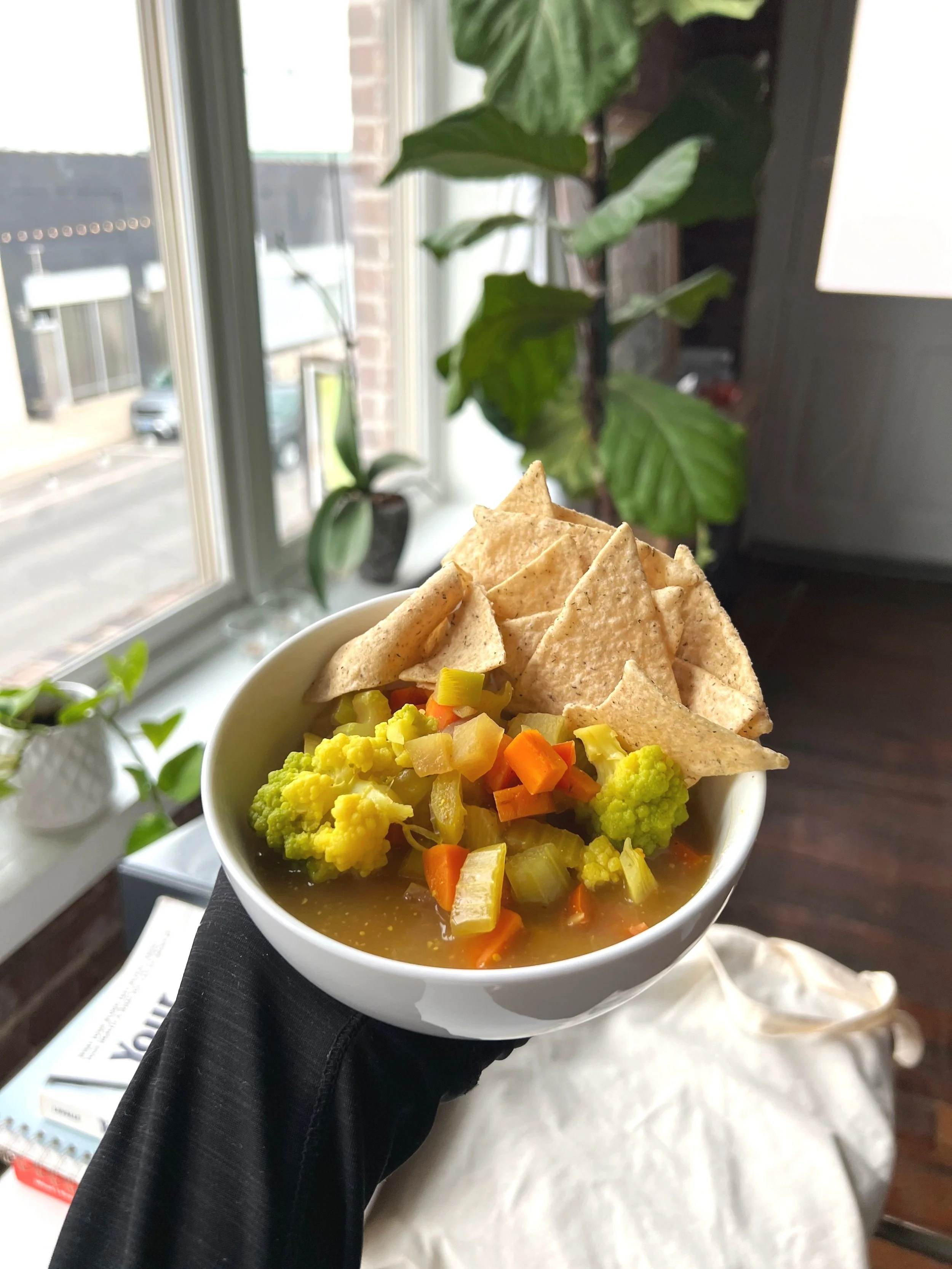*Soup Ratios*
I make a lot of soups and people ask for the recipes, but I honestly just wing it based on years of making them. Throughout the years, there is a ratio and process to what I do every single time that creates a soup, and I’m here to share it with you because you too can then create your own soups based on what you like.
When it comes to soup, I don’t reaaaaaaly want to have to chop 10+ ingredients, but I often use at least 10 ingredients in a dish. Here is what I’ve found that works for me in terms of cooking soups, but also mixing it up and making it fun!
The perfect soup ratio is 3:3:3:1.
3 vegetables that you have to chop and cook.
3 add ins that you don’t have to chop or cook, either frozen or canned.
3 spices that you love.
1 vegetable that you’ve never tried before (add to the chopped/cooked section)
Vegetables that you have to cook include onion, carrots, celery, sweet potatoes… things of that nature! You just pick 3 and chop them at the beginning of the week and store them in your fridge for when you’re ready to cook your soup.
The 3 add ins that you don’t have to cook could include frozen pre-cooked veggies such as corn, cauliflower, peas or broccoli. It can also include canned beans, tomatoes, or even some fresh greens that just need wilting and not cooking.
The 3 spices that you love is where it gets really fun! You can take your soup in many different directions in terms of cuisines using Italian spices, Mexican spices, or Asian spices, or more. Here is a good spice reference for different cultures if you’re looking to mix it up; the chart even comes in pairs of 3.
Adding in one unique vegetable will not only expand your knowledge (Have you ever heard of romanesco broccoli?! It’s my favorite vegetable and I used it in this week’s soup!), but it also diversifies your microbiome.
Our gut is like a luscious rainforest - you need diversity for a balanced ecosystem and prevention of disease! A diverse microbiome is one of the number one indicators of optimal health. Healthy and diverse gut bacteria help to your gut lining healthy and strong, supports gene regulation, metabolism, and your immune system. It also decreases inflammation through the production of short chain fatty acids (1). Lower bacterial diversity has been observed in people with inflammatory bowel disease, psoriatic arthritis,, type 1 and 2 diabetes, atopic eczema, celiac disease, and arterial stiffness than in healthy controls.
Every single plant contains fiber that will feed different bacterial populations in your microbiome. So to support this you need to try different foods! Adding new veggies into a soup is such a great way to do just that. Plus, it’s freaking FUN! You get to eat what is in season and get creative in the kitchen, beauties! Introduce it into date night as a game if you must, but be sure to include diversity. There are so many cool foods out there, why would you not?!
“We’ve made health too complicated with our extensive lists of foods to avoid, complex percentages of fats-to-protein-to-carb ratios, elimination diets, calorie counting, even weighing our food—and despite all these rules, we’re not getting any better. It just doesn’t need to be this complicated. Diversity of plants. That’s it. That’s all you have to remember. Done. No more annoying food lists. If you follow this one rule, it will lead you to better health”
-Will Bulsiewicz, Fiber Fueled
Ratio Recipe:
Chop and prepare your 3 veggies + your 1 new, fun veggie.
Add these to a large pot with 1/2 cup water on medium high heat with your 3 spices. Let them steam with the lid on until mostly cooked (about 15 minutes), stirring often.
Add in the 3 uncooked veggies + 3 cups of water. Bring to a low-medium heat and let simmer with the lid on for 10 more minutes.
That’s it. Add more water if you’d like, and add whatever you’d like! I am a big fan of Siete Chips.
My Soup This Week:
Celery, white onion, carrots, and romanesco broccoli, chopped.
Parsley, Oregano, and Mustard Seed for spices.
Frozen corn, canned chili beans, and canned diced tomatoes added in at the end (rinsed and drained first)
Get creative, beautiful!!
Xx
Gut Microbial Diversity References:
BULSIEWICZ WILL. Fiber Fueled: The Plant-Based Gut Health Program for Losing Weight, Restoring Your Health, and... Optimizing Your Microbiome. S.l.: AVERY PUB GROUP; 2022.

